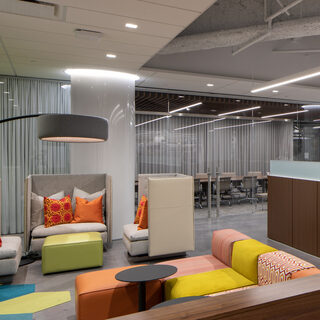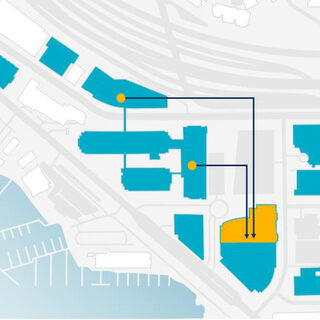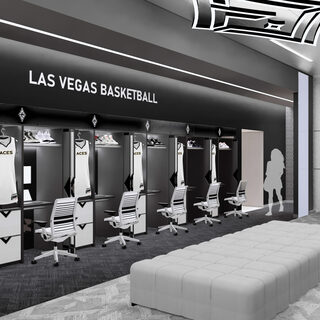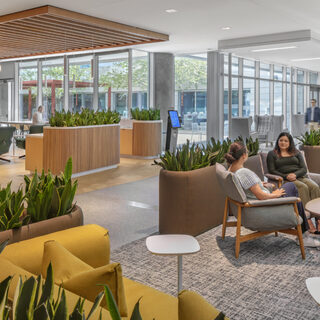Tradeline's industry reports are a must-read resource for those involved in facilities planning and management. Reports include management case studies, current and in-depth project profiles, and editorials on the latest facilities management issues.
Latest Reports
Incorporating Advanced Labs into Urban Commercial Buildings
Designing and building labs in the unlikely and constrained location of the prestigious Pacific Design Center (PDC) with Hollywood as a backdrop is a daunting task, requiring adherence to quality expectations, facilities management guidelines in a non-research environment, separation from existing high-end tenants, and compliance with infrastructure requirements. Cedars-Sinai, one of the largest nonprofit medical centers in the U.S., accepted the challenge after deciding to expand its research portfolio. Growing beyond its limited campus is necessary to accommodate the rapid growth of its research facilities and to aid in recruiting top scientists by providing innovative facilities with optimum resources. Hospital officials looked a half mile from their campus to the PDC, a designated cultural resource building complex designed by Cesar Pelli in the 1970s. Known in the 1980s and 1990s as a vibrant hub of premier art, design, and architectural showrooms, many of the tenants now have online shops rather than physical space in the cluster of buildings, leaving vacancies available for lease and an opportunity for Cedars-Sinai’s growth.
Fred Hutch Cancer Center’s Space Realignment Sheds 30,000 sf, Saves Roughly $4 Million
In the span of 16 months, Seattle’s Fred Hutch Cancer Center formulated and implemented a space realignment initiative that divested 30,000 sf of leased space, generated $2 million in savings and another $2 million in cost avoidance, and impacted approximately 1,400 people, 20% of its 7,000-member workforce.
Athletic Facilities Designed to Accommodate Women at All Levels
One of the biggest sea changes in both professional and collegiate athletics is the increased participation of women at all levels—as team owners, athletes, coaches, officials, and staff. Coverage of women’s basketball and women’s soccer, which eclipsed men’s soccer for a time, seems to dominate the sports news cycle, and viewership is expected to keep rising in 2025. The Professional Women’s Hockey League played its first game in January 2024, and the world’s first stadium built solely for a professional women’s sports team opened in March 2024. January 2025 saw the inauguration of a new 3x3 women’s professional basketball league, called Unrivaled, based in Miami. Revenue from women’s sports nearly doubled in 2024, to $1.88 billion globally, and is projected to reach $2.35 billion in 2025. More than half of that revenue came from North America, and investors are taking note.
Medical and Health Education Buildings Serve as a Model for a Hybrid Future
The design and planning of medical and health sciences education facilities serve as both the precursor and the wave of the future, with facilities that are not only mixed-use, but truly hybridized and integrated. Formerly siloed programs for nursing, medical, surgical, and pharmaceutical training reap exponential benefits from shared technology, resources, and spaces that enable multiple institutions and stakeholders to offer more robust programs. The hybrid building model mirrors a coevolving approach to healthcare, where teamwork is central, and training with the latest technologies is key. By accommodating the functions of multiple disciplines, forward-thinking institutions can both leverage available space and focus on creating environments for the interpersonal collaboration that underpins the experience of 21st-century health practitioners, as well as that of their patients.
Mandate vs. Magnet: Designing the Office You Need Now
Three years after the end of the pandemic, office occupancies have still not gone back to where they were pre-COVID, and there is a wide range of opinions about whether they should. While some executives have ordered everyone back into the office, arguing that being physically present facilitates engagement and innovation, many workers argue that their working life and their home life are better when they can choose where they log on.





